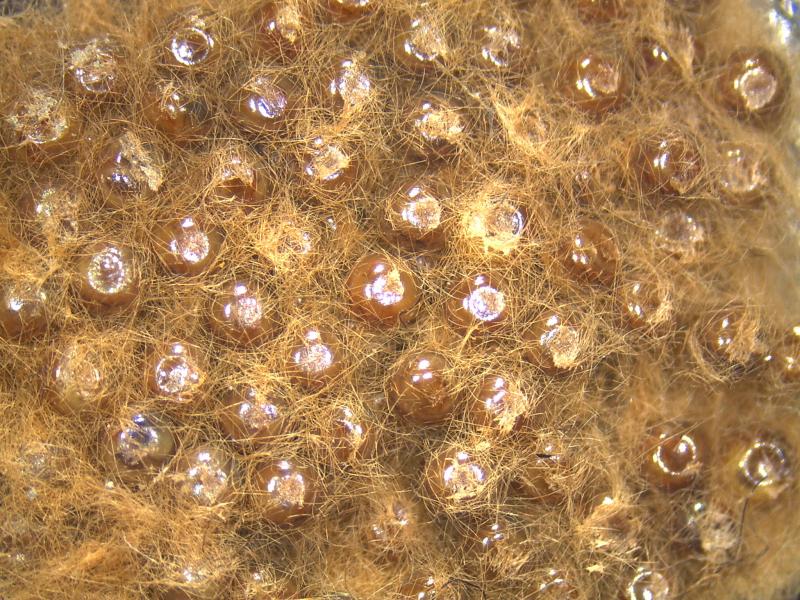New Orleans, Louisiana - U.S. Customs and Border Protection (CBP) Agriculture specialists assigned to New Orleans recently intercepted 17 separate Asian Gypsy Moth (AGM) masses on the same vessel.

Moth mass. Each mass can contain hun-
dreds of eggs that produce pests, which
eat the foliage of more than 500 tree and
shrub species.
Agriculture specialists boarded a Panamanian bulk carrier for inspection Aug. 1, as the vessel had made several port calls in Japan during the country’s AGM high risk season. Despite AGM masses being removed from the vessel while docked in Kobe, Japan in June, CBP agriculture specialists in New Orleans discovered a total of 17 new masses during three separate inspections. All masses were removed, and the infested areas were treated. The masses were submitted to the USDA entomologist, who confirmed Thursday that the egg masses were AGM.
“Once again, our agriculture specialists used their experience and outstanding attention to detail to detect and mitigate what could have been a serious threat to our environment,” said Mark Choina, Acting Area Port of New Orleans Director. “CBP agriculture specialists work hard to safeguard America from harmful pests, and I couldn’t be prouder of the great job they do.”
Although they may look harmless, the U.S. Department of Agriculture has called Asian Gypsy Moths, known scientifically Lymantria dispar, one of the most destructive threats to the environment. Each mass can contain hundreds of eggs that produce pests, which eat the foliage of more than 500 tree and shrub species. The AGM risk period for vessels entering the United States can last up to late September. Most recently, agriculture specialists in Baltimore discovered AGM masses on three vessels entering the Port of Baltimore. These vessels had also made port calls in Japan.
The CBP New Orleans Office of Field Operations is located in the historic Custom House on Canal Street. Its area of operation includes ports in Louisiana, Mississippi, Arkansas, Tennessee, and Alabama.
